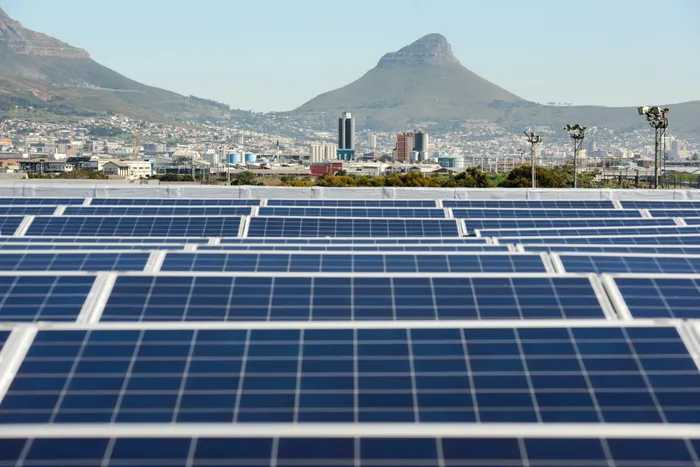Renewable energy surge highlights urgent need for grid flexibility and storage investment

According to the 2025 South African Renewable Energy Grid (SAREG) Survey, a collaboration between the South African Photovoltaic Industry Association (SAPVIA), the South African Wind Energy Association (SAWEA), and Eskom NTCSA, the country’s contracted renewable energy capacity has risen sharply to 220,030 MWac, up from 133,748 MWac in 2024.
Image: Armand Hough/Independent Newspapers
South Africa’s renewable energy pipeline has surged past grid capacity, with new generation commitments now outpacing the system’s ability to absorb them — underscoring the urgent need for greater investment in battery storage and grid flexibility.
According to the 2025 South African Renewable Energy Grid (SAREG) Survey — a collaboration between the South African Photovoltaic Industry Association (SAPVIA), the South African Wind Energy Association (SAWEA), and Eskom National Transmission Company SA (NTCSA) — the country’s contracted renewable energy capacity has risen sharply to 220 030 MWac, up from 133 748 MWac in 2024.
The total includes all solar PV, wind, and battery storage facilities, spanning projects that are operational, under development, or at early planning stages. The survey recorded a significant increase in participation, with 673 projects included this year — up from 463 in the previous edition.
Presenting the results on Monday, Ronald Marais, strategic grid planning manager at Eskom NTCSA, said the growing penetration of renewable energy projects presents both opportunities and new challenges for the national grid.
"The biggest issue with renewables is weak grid conditions, which are the ability to manage voltage levels on the grid," Marais said.
"And because the invertors are controlled by voltage levels, as the system gets weaker you have to strengthen the ability to control the voltage levels and voltage angles. That's a combo between system strength and pressure conditions on the grid."
Marais said the Transmission Development Plan (TDP) for the period 2030–2034 includes measures to reinforce the grid through synchronous condensers and grid-forming battery technologies. These improvements are intended to support higher renewable integration levels without compromising grid stability.
"At about 30% renewable penetration, the system begins to show stress," he said. "By 50%, you need grid stiffening to maintain reliability, which can push integration up to around 70% once flexibility is improved."
While grid integration remains manageable for now, Marais said the main constraint is flexibility — the ability of the grid to meet fluctuating demand throughout the day.
"The main issue is flexibility on the grid because the ability to meet all loading at all hours means that if the grid is not flexible enough, for example, it's seeing applications already to the level of IRP 2034 levels," Marais said.
"The flexibility of batteries etc are not at [required] levels, it means to meet the evening peaks from the daytime lows after you have put the PV in is not possible. That inflexibity means the amount of spece to put in the renewables is reduced, so the biggest constraint is the ability to meet the supply and demand at all hours and ensure the grid is flexible enough to do that."
Despite these constraints, Marais described the results as encouraging, signalling a massive wave of renewable energy interest that could ultimately stimulate broader economic growth.
"It’s good to see the scale of potential generation coming online," he said. "From a position of short supply, we’re moving toward potential oversupply — or at least a more balanced system — as long as prices remain competitive. The key is ensuring the grid can handle it."
He concluded that while grid flexibility remains the key limiting factor, South Africa now has a clear opportunity to expand demand and drive economic growth through clean energy.
"You can only supply as much as your network can handle," Marais said. "But the potential to grow demand — and the economy — is there. That’s a very good sign for South Africa’s energy future."
BUSINESS REPORT